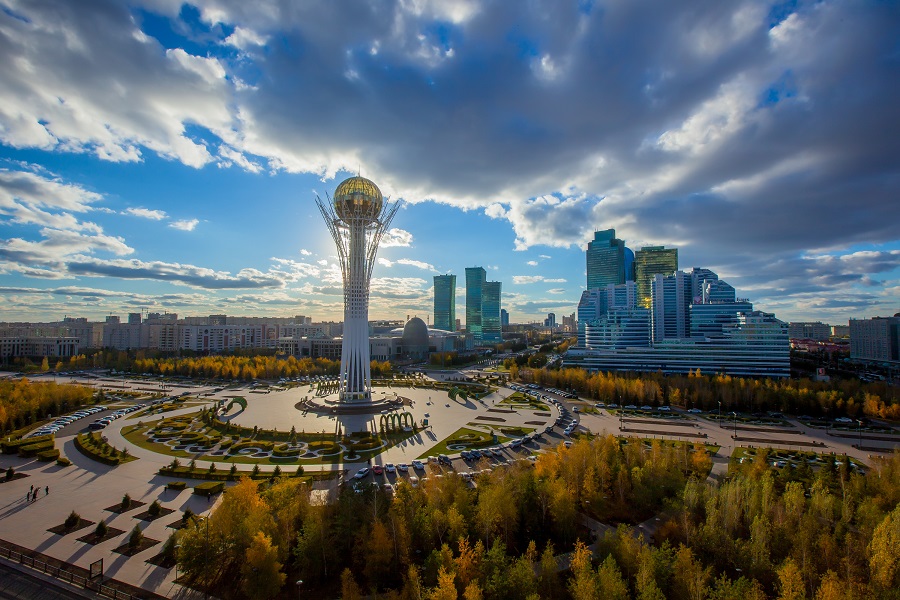Kazakhstan has been pulling out all the stops over the past year, ever since hosting the world’s fair in Astana, known as EXPO 2017, and is going high-tech all the way. Researchers plan on launching an interactive digital map that will make visiting Kazakhstan all the more enticing, and learning about what is considered a large country in the Caspian and Central Asia regions.
“We are planning to launch a project, which will reflect the multi-confessional, ethnic and religious diversity of the country,” Ulan Bigozhin, a postdoctoral researcher at Nazarbayev University, said Monday while addressing a press conference at the Cabinet of Kazakhstan.
“This will be a kind of [digital] encyclopedia with JavaScript data, photos, and other [features],” he added. The encyclopedia will allow tourists from all over the world to enjoy Kazakhstan’s rich cultural legacy and plan a trip to what is Central Asia’s largest country – without having to leave home.
Initiated by President Nursultan Nazarbayev in 2017 and known as the “Sacred Map of Kazakhstan,” the project features thousands of natural-landscape objects as well as cultural and architectural artifacts. To gather information needed for the encyclopedia, scholars from Kazakhstan are carrying out research throughout the country’s vast regions and various geographical areas.
The first expedition, to be led by Bigozhin, is scheduled for May 17 and will cover territories lying between country’s capital city Astana, the northeastern town of Ekibastuz, Karaganda, as well as eastern cities of Oskemen and Semey. Researchers will take video shooting of historical objects using various devices and drones, while residents will be interviewed for any ethnographic purposes, adding a human dimension to the project.
Scholars have already discovered a huge number of written materials that relate to the 19th-early 20th century, and the mid-1930s. These artifacts include ancient notebooks – dapters, different editions of the Quran, notes from local imams, mullahs, teachers and public figures.
“If we do not collect material now, this huge folklore and ethnographic material will simply disappear due to the current processes of globalization and migration of population to large cities,” Bigozhin said.
The developers of the encyclopedia have designed a list of the sacred sites, which already features nearly 700 objects located in Kazakhstan.
Among them is the Naizatas Rock, located in the Pavlodar region. Naizatas, which means “a stone spear” in Kazakh, is of great popularity among alpinists, who also call this cliff “Bun.” This is because of its shape and also because of a tragic story that happened there a long time ago when an ancient empire, known as the Dzungar Khanate, attacked Kazakhstan.
According to the legend, all men join the war with the enemy, while women began to bake buns to support those fighting for freedom. The battle was hard and long, while the women were folding these buns one on another. Unfortunately, Kazakhstani men did not return from the deadly battle, and since then, Naizatas has been symbolizing the grief of the Kazakh people and hard times they had gone through.
The list of the sacred sites and objects also include the monument, installed in memory of the victims of the Semipalatinsk nuclear test site and dubbed “Stronger than death.”
With a height of 25 meters, this stele is related to the history of Semipalatinsk, which was closed in accordance with the decree of the President of Kazakhstan in 1991. The most active tests were carried out there between 1949 and 1963, when new weapons were being developed. As a result, huge territories in Kazakhstan and Russia’s Altai Territory and thousands of people were exposed to devastating radiation.







 Armenian sappers commenced on Monday mine-clearance operations in the territories adjacent to the Saint Mary Church in village of Voskepar (Armenia...
Armenian sappers commenced on Monday mine-clearance operations in the territories adjacent to the Saint Mary Church in village of Voskepar (Armenia...
 Iran and Pakistan have signed eight cooperation documents in various fields, and agreed to strengthen ties to fight terrorism in the region.
Iran and Pakistan have signed eight cooperation documents in various fields, and agreed to strengthen ties to fight terrorism in the region.
 President Aliyev emphasized the critical role of the North-South Transport Corridor in fostering transport cooperation between Azerbaijan and Russi...
President Aliyev emphasized the critical role of the North-South Transport Corridor in fostering transport cooperation between Azerbaijan and Russi...



